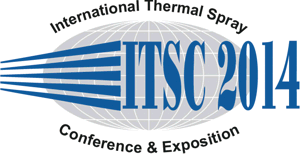
|
3655 |
|
Thursday, May 22, 2014, Hall H3 10:40 AM Wear Protection |
|
The impact and sliding wear performance of thermal spray HVAF thick carbide coatings on steel substrates |
|
Richard Waudby* / VTT Technical Research Centre of Finland, Finland Tomi Suhonen/ VTT Technical Research Centre of Finland, Finland Tommi Varis/ VTT Technical Research Centre of Finland, Finland Kenneth Holmberg/ VTT Technical Research Centre of Finland, Finland |
|
It is well accepted that thermal spray hard carbide coatings demonstrate exceptional wear resistance under sliding conditions, whilst little is known of their performance under impacting conditions. Future commercial and industrial applications of impact resistant thick hard coatings may include press dies, aerospace landing gear and automotive drivetrain components. Such applications generally involve some degree of sliding movement, where hard carbide coatings are attractive regarding their sliding wear resistance. With the correct coating material and processing, the frictional behaviour can also be optimised for the specific application, such as ball valves. The wear performance of four different thermal spray HVAF coatings was assessed according to their impact, sliding-impact and sliding wear performance. Three commercial HVAF coatings with basic compositions of CrC-NiCr, WC-CoCr and MoC-CoCr were chosen, along with an experimental HVAF WC-CoCr coating. The samples were sprayed on the same hot-rolled steel to a coating thickness of 300µm, before polishing and grinding to thicknesses between 150 and 200µm. The coatings were assessed with standard tribological tests including ball-on-disc, scratch and rubber wheel to assess sliding wear performance and coating adhesion; the latter may affect impact performance. Normal impact tests were performed to assess impact fatigue behaviour of the coated system. It was observed that the commercial CrC-NiCr coating exhibited poor impact wear and sliding wear performance compared to the commercial WC-CoCr and MoC-CoCr coatings, despite similar hardness to the MoC-CoCr system. The CrC-NiCr system demonstrated the poorest impact wear resistance. The MoC-CoCr showed favourable impact and sliding wear performance, which are believed to be influenced by mechanical properties such as higher fracture toughness. Efforts were made to identify failure modes of the coatings according to impact and sliding wear criteria, in order to aid the design of new thermal spray HVAF coatings with sufficient impact fatigue wear resistance. |